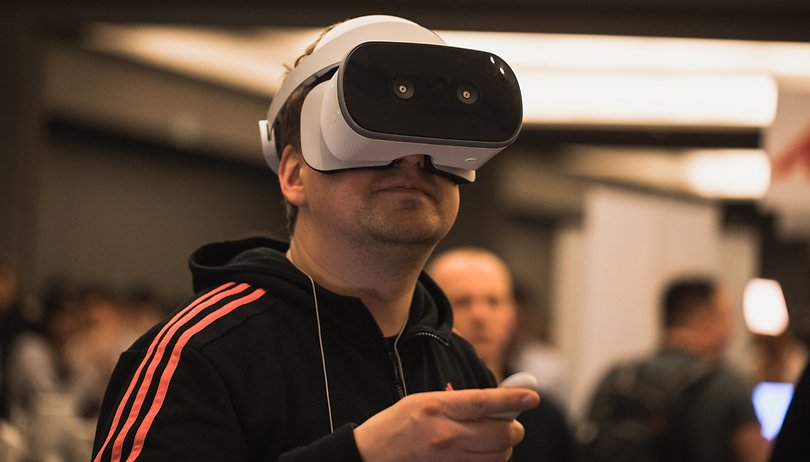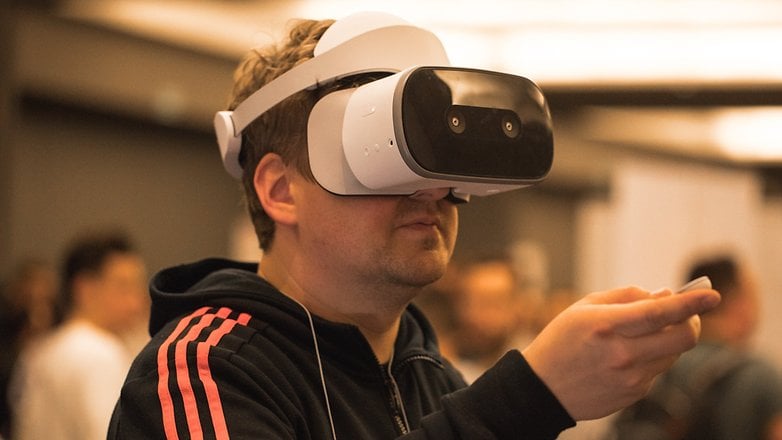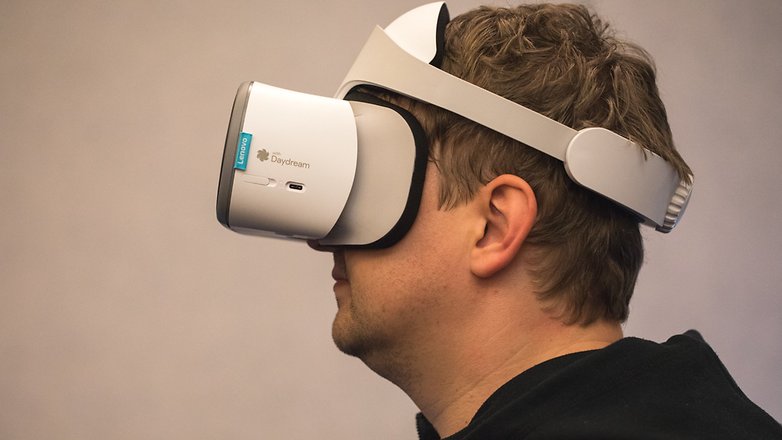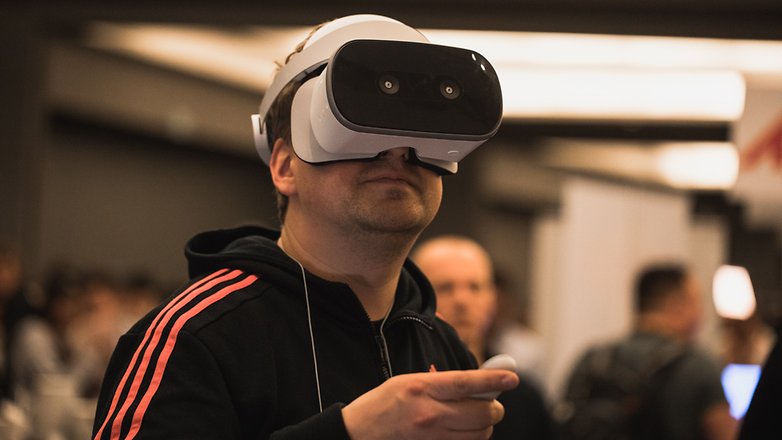Lenovo Mirage Solo (VR) hands-on: Standalone VR taking flight


Google has put some hope in standalone VR glasses with Daydream support. Only two manufacturers wanted to offer Daydream headsets, and just Lenovo is left. We got to experience Lenovo’s Mirage Solo at MWC and were happily surprised.
Design and build quality
Put it on, fasten the clasp and off you go: the Mirage Solo starts quickly and easily. I look around and find myself in the… got it, it’s Daydream’s homescreen. Just align the controller and off you go. I chose Blade Runner 2049 as the demo program for my VR experience, since I finally saw the movie.
I only came in with modest expectations. I was expecting to just have one experience, similar with with a Pixel and Daydream View. But I was wrong about that. The standalone VR glasses were able to provide a very clear picture. The screen-door effect is visible, but isn’t as painful to look at as I feared. In terms of system performance, the Snapdragon 835 processor ensures decent performance.

The Mirage Solo captures movement in six dimensions. So I wasn't just limited to looking around, I could also take one or two steps to the left or right or duck down. I was also able to move within a radius of one and a half meters (so clear the real space around you!). When I moved on, the field of vision got darker and I had to go back. In my short test run, Google’s tracking system known as WordSense did a great job.
The controller is another story. The almost room-scale tracking is clouded by the controller, which only has three degrees of freedom. That means that you’re only able to point to a point, but you can’t reach it with one hand movement. In order to do that, the controller would need six dimensions of movement.

My Blade Runner excursion was short. I have to try it again once I get the chance, because there wasn’t enough time at the booth to enjoy the story in detail. The headset was very comfortable, but I would’ve like to have played a little more to correct my head’s position. I quickly got the feeling that the VR glasses were falling off my head and I kept getting dragged back into reality. That’s when you really notice that all technology has been implemented into the headset: from the chipset to the battery to display.
But some questions remain unanswered: experience has shown that darker environments still look good in VR glasses, even when the optical quality of the lenses isn’t particularly good. The Blade Runner experience is of course quite dark. And what about battery life? It’s hard to judge, but the battery should last an hour or two, although Lenovo doesn’t provide concrete information.
It still isn’t clear when the Mirage Solo will actually arrive on the market. Lenovo has stated that the headset will cost less than 400 dollars, but we won’t know for certain until the official price is released.
Lenovo Mirage Solo: Technical data overview
| Lenovo Mirage Solo | |
|---|---|
| Chipset | Snapdragon 835 |
| Display | QHD (2,560 x 1,440 Pixel) |
| RAM | 4 GB |
| Internal memory | 64 GB |
| Operating system | Android with Daydream (likely Android 7) |
| Weight | 645 grams |
| Battery | 4,000 mAh |
| Tracking | 6 DOF headset (WorldSense), 3 DOF controller |
| Field of vision | 110 degrees |
Lenovo Mirage has a lot of competition
At this point it’s worth having a quick glance at the competition, as I also had the opportunity to try out the Vive Focus at MWC. These standalone VR glasses also left me with a good impression, but unfortunately I was only able to watch a 360-degree video. Overall, the Lenovo VR glasses seemed more comfortable, but the quality of the display is difficult to gauge because the content was so different.

Ocolus, on the other hand, wants to bring an extremely affordable VR solution to the market with Oculus Go. The Go should be clearly inferior to the Mirage Solo. The key question is whether app developers are taking advantage of the Mirage Solo’s near room-scale tracking to create interesting experiences. But Oculus has another trick up its sleeve with Project Santa Cruz: it may not appear until 2019, but it will enable full motion in six directions.
But even with a look to the competition, it still seems that the Mirage Solo could be a good offer.
Early Verdict
Standalone VR glasses have been talked about for some time, but for a long time they remained not ready for the market. Lenovo has now shown that they’re ready. The tracking works reliably and the display resolution and performance are good enough for VR experiences. The Mirage Solo greatly exceeded my expectations.
Now it’s just a matter of waiting for the market launch and seeing how the Mirage Solo will perform in longer sessions. There is already content available on Daydream, so it shouldn’t fail, but will there be issues with overheating? How long will the battery last? And is the limited Daydream controller sufficient in the long run? Despite all the question marks, the Mirage Solo seems to have a real chance, since you can’t get into VR any quicker than if you have your own standalone VR glasses.
What do you think of this latest development? Would you be eager to purchase your own pair soon?



















